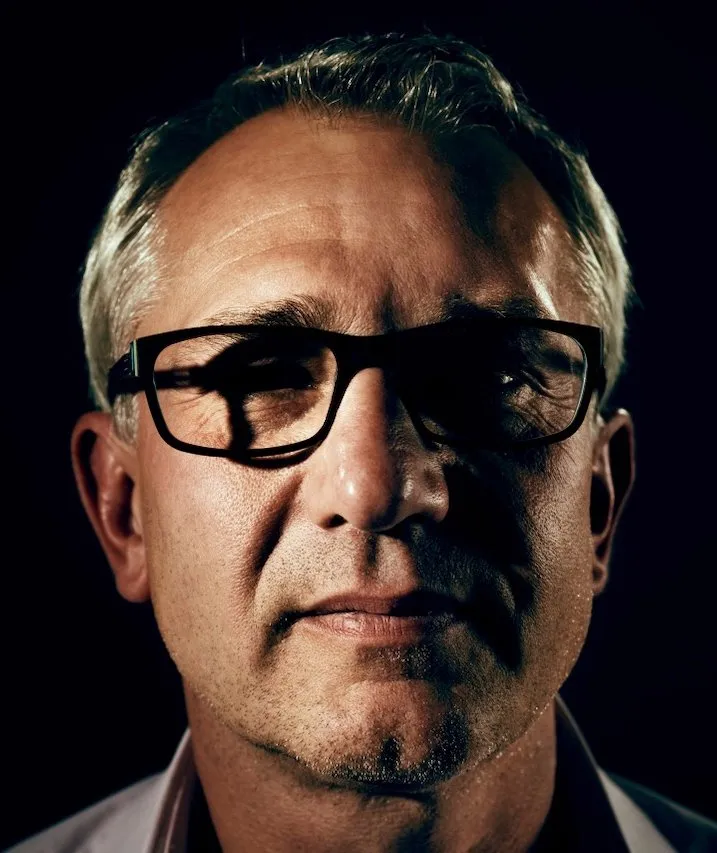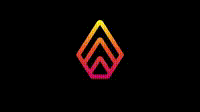Hello HIVEs!
What actually sounds very simple is often very difficult to implement. Using two examples, I would like to show how I tried to stage landscapes with just a flashlight. This is the first part. Part two will follow later.
Was eigentlich ganz einfach klingt ist oft sehr schwer zu realisieren. An Hand von zwei Beispielen möchte ich zeigen, wie ich versuchte, Landschaften mit Hilfe nur einer Taschenlampe in Szene zu setzen. Dies ist der erste Teil. Teil zwei folgt später.

Canon EOS 6D Mark II
TS-E45mm ƒ2.8
ISO 100; 45mm; ƒ6.3; 483s
We were having dinner together in a Görlitz restaurant as we pondered where to do a light painting that night.
Hans and @stepko had it in their heads to photograph the Rakotz Bridge. Although I had never visited the location during daylight or researched it on the internet, I decided to drive to Rakotzbrücke in Gablenz after the meal together with @Stepko and Hans. It was about 45 minutes by car from Görlitz.
Wikipedia writes about this bridge: "The Rakotz Bridge, also Devil's Bridge, in the azalea and rhododendron park Kromlau am Rakotzsee is a landscape element of the romantic garden architecture of the 19th century."
Wir saßen zusammen in einem Görlitzer Restaurant beim Abendessen, als wir darüber sinnierten, wo wir in dieser Nacht ein Lightpainting aufnehmen werden.
Hans und @stepko hatten sich in den Kopf gesetzt die Rakotzbrücke abzulichten. Obwohl ich die Location noch nie bei Tageslicht besucht oder im Internet recherchiert hatte, entschloss ich mich gemeinsam mit @Stepko und Hans nach dem Essen zur Rakotzbrücke nach Gablenz zu fahren. Von Görlitz war das in ca. 45 Minuten mit dem Auto zu erreichen. Wikipedia schreibt zu dieser Brücke: "Die Rakotzbrücke, auch Teufelsbrücke, im Azaleen- und Rhododendronpark Kromlau am Rakotzsee ist ein Landschaftselement der romantischen Gartenarchitektur des 19. Jahrhunderts."

Canon EOS 6D Mark II
TS-E45mm ƒ2.8
ISO 100; 45mm; ƒ8; 46s
It was already dark when we got there. We first explored the terrain around the bridge. The paths there are well developed and the moon shone brightly that night. A test shot (picture above), in which the bridge was illuminated with a flashlight from the camera position, provided an overview at first, but seemed rather boring. The structure of the bridge surface does not come into its own.
Es war bereits dunkel als wir dort ankamen. Wir erkundeten zuerst das Gelände rund um die Brücke. Die Wege sind dort gut ausgebaut und der Mond schien in dieser Nacht hell. Einen Probeschuss (Bild oben), bei der die Brücke mit einer Taschenlampe von der Kameraposition aus beleuchtet wurde, verschaffte erstmal einen Überblick, wirkt aber eher langweilig. Die Struktur der Brücken-Oberfläche kommt nicht zur Geltung.

Canon EOS 6D Mark II
TS-E45mm ƒ2.8
ISO 100; 45mm; ƒ8; 126s
On the next attempt, pictured above, I approached the bridge and lit it from the side from a acute angle. The texture came out clearly. I really liked that.
After that I wanted to put the last picture on the camera chip. It was well past midnight. Hans already had his picture ready.
Stefan was a bit lame on his feet after an accident the night before. Because he couldn't walk properly, he sat down next to the camera and covered the lens when called. The bridge itself is impassable. So we had to take the long way along the shore. The moon was so bright that the lens had to be covered during our change of position from one to the other bank of the bridge. Handy if you have a helping hand on the camera. Thank you again Stefan!
Unfortunately, I had illuminated the shore area too weakly in this picture and the rock that I wanted to emphasize in blue behind the bridge was not visible from our perspective. That's what happens when you adjust the camera in the dark. 🙄
Bei dem nächsten Versuch, im Bild oben, ging ich an die Brücke heran und beleuchtete sie aus einem spitzen Winkel von der Seite. Dabei kam die Textur deutlich hervor. Das gefiel mir schon recht gut.
Danach wollte ich das finale Bild auf den Kamerachip bringen. Es war bereits weit nach Mitternacht. Hans hatte schon sein Bild fertig. Stefan war nach einem Unfall am Vorabend etwas Fusslahm. Weil er nicht richtig laufen konnte, setzte er sich neben die Kamera und verdeckte auf Zuruf das Objektiv. Die Brücke selbst ist nicht passierbar. Deshalb mussten wir den langen Weg entlang des Ufers nehmen. Der Mond schien so hell, dass das Objektiv während unseres Positionswechsels von einer- auf die andere Uferseite der Brücke, abgedeckt werden musste. Praktisch, wenn man eine helfende Hand an der Kamera hat. Nochmal herzlichen Dank dafür Stefan!
Leider hatte ich in diesem Bild den Uferbereich zu schwach ausgeleuchtet und den Felsen, den ich hinter der Brücke in Blau hervorheben wollte, sah man von unserer Perspektive aus nicht. So ist das, wenn man die Kamera im Dunkeln ausrichtet. 🙄

Canon EOS 6D Mark II
TS-E45mm ƒ2.8
ISO 100; 45mm; ƒ6.3; 768s
Then I just had to go again. In the cover picture, I first used the NOCTIGON DM11 to illuminate the right side of the bridge at an acute angle. Then I made my way to the left side of the bridge and illuminated it as well. After that, I went behind the camera and lit the shore. With that, the cover image was complete. Without the blue filter: less is more. 😉
Dann musste ich eben nochmal ran. Im Titelbild leuchtete ich mit der NOCTIGON DM11 erst die rechte Seite der Brücke im Spitzen Winkel aus. Dann machte ich mich auf den Weg auf die linke Seite der Brücke und leuchtete diese ebenfalls aus. Danach ging ich hinter die Kamera und beleuchtete das Ufer. Damit war das Titelbild fertig. Ohne den blauen Filter: weniger ist mehr. 😉

Above you can see the tools used in the images. These fit in every camera backpack and are manageable in the purchase price. Used correctly in the long exposure, it gives the shot another kick.
Next Sunday I will report on another light painting performance in nature.
So stay tuned!
Oben seht ihr die in den Bildern eingesetzten Tools. Diese passen in jeden Kamerarucksack und sind im Anschaffungspreis überschaubar. In der Langzeitbelichtung richtig eingesetzt, gibt es der Aufnahme nochmal einen Kick.
Am nächsten Sonntag berichte ich an dieser Stelle über eine weitere Lightpainting-Performance in der Natur. Also bleibt gespannt!
What Is Light Painting?
Light painting is a unique art form. As a rule, the darkness is illuminated by the artist with various light sources and traces of light are painted into the picture with various lighting tools. Various techniques are used, such as camera rotation or other movements of the camera during exposure. The creative possibilities are almost unlimited. When using ND filters, this technique can also be used in daylight. All images were taken during a single exposure. Apart from denoising, sharpening, cropping and possibly adjusting the white balance, the images are not processed on the computer.
Lichtmalerei ist eine einzigartige Kunstform. In der Regel wird die Dunkelheit mit diversen Lichtquellen vom Künstler ausgeleuchtet und Lichtspuren mit diversen Lichtwerkzeugen ins Bild gemalt. Dabei kommen verschiedene Techniken zum Einsatz, wie Kamerarotation oder andere Bewegungen der Kamera während der Belichtung. Die kreativen Möglichkeiten sind nahezu unbegrenzt. Bei Einsatz von ND-Filtern kann diese Technik auch bei Tageslicht angewand werden. Alle Bilder wurden während einer einzigen Belichtung aufgenommen. Abgesehen vom Entrauschen, Schärfen, Beschneiden und eventuellem Anpassen des Weißabgleichs werden die Bilder nicht am Computer bearbeitet.
CandelART
more about me and my art:

WE ARE LIGHT PAINTERS
To help and support the LightPainters community here on Hive I would appreciate your delegation of HivePower. Any amount is appreciated. It does not require much to get started, we are happy for any gesture. @lightpainters
How to delegate?
Delegate 50HivePower, [50HP]
Delegate 250HivePower, [250HP]
Delegate 500HivePower, [500HP]
Delegate 1000HivePower, [1000HP]
All the Hive Power will help to upvote the artist's contribution as part of the LightPainters community.







